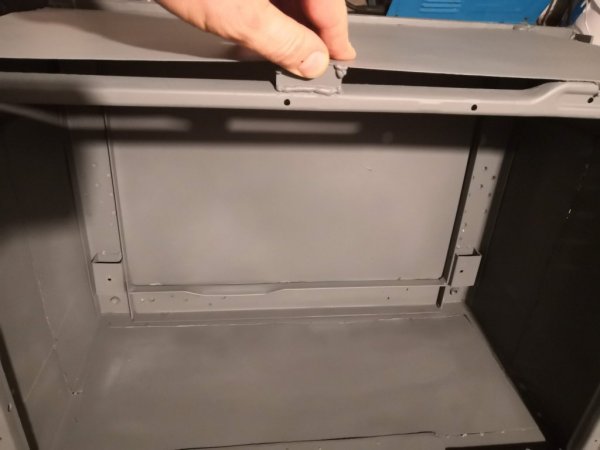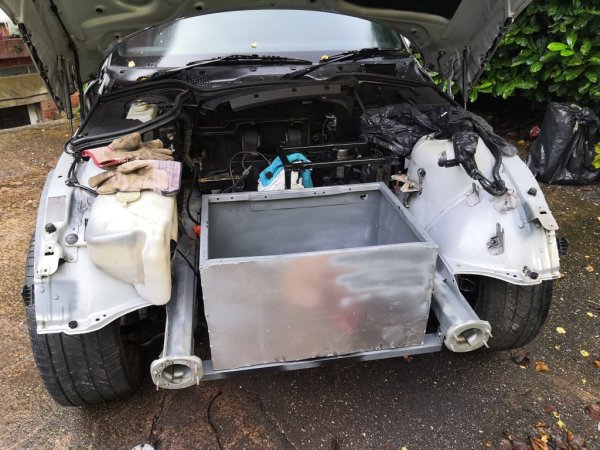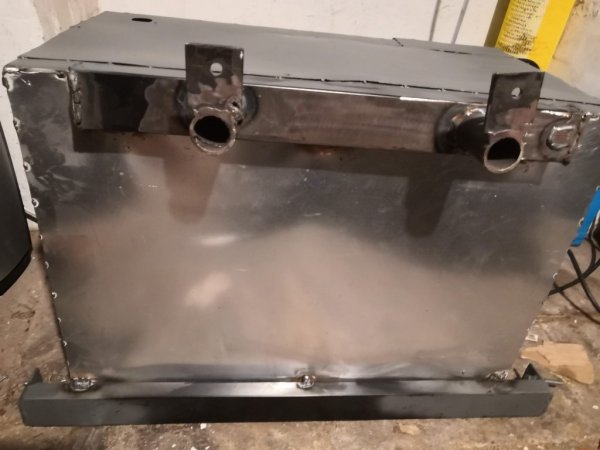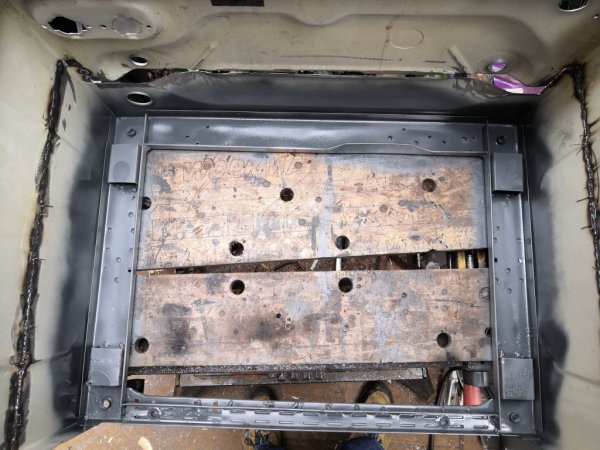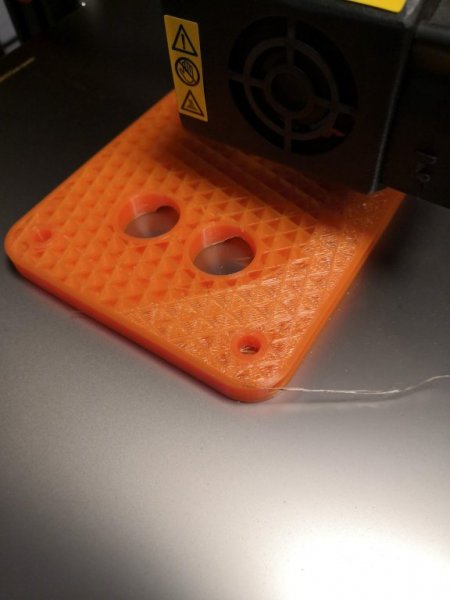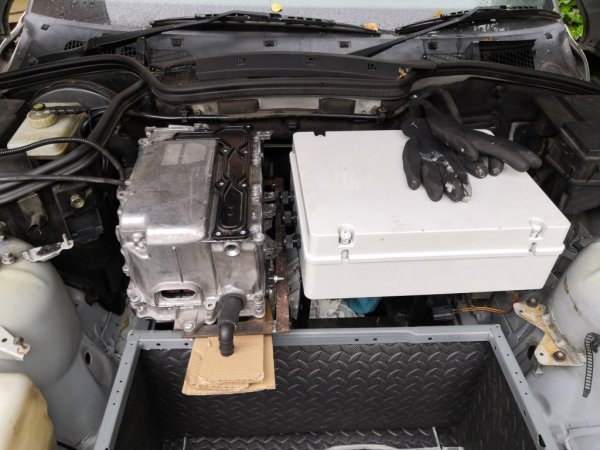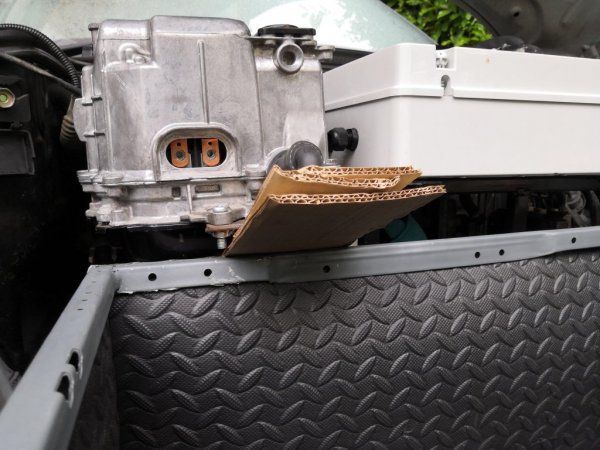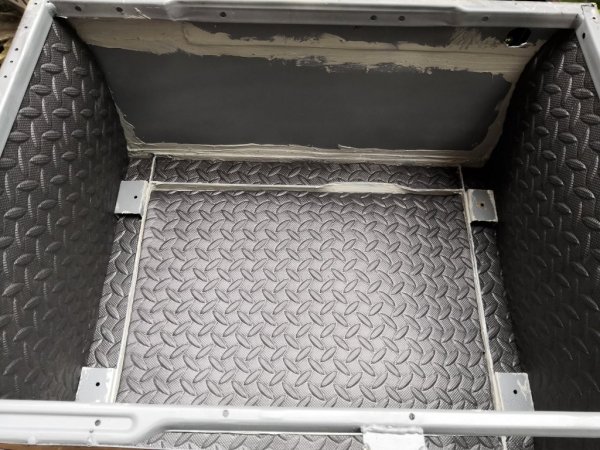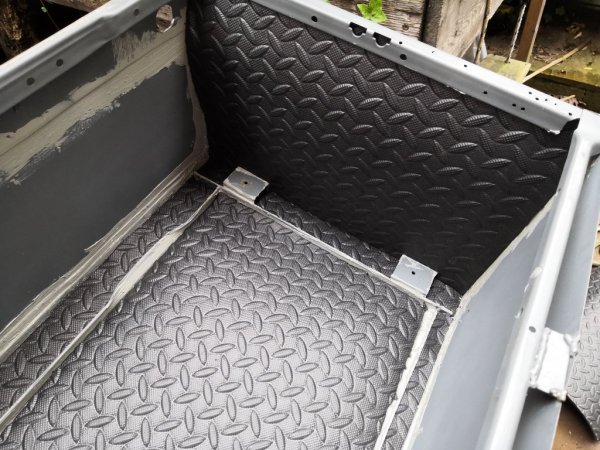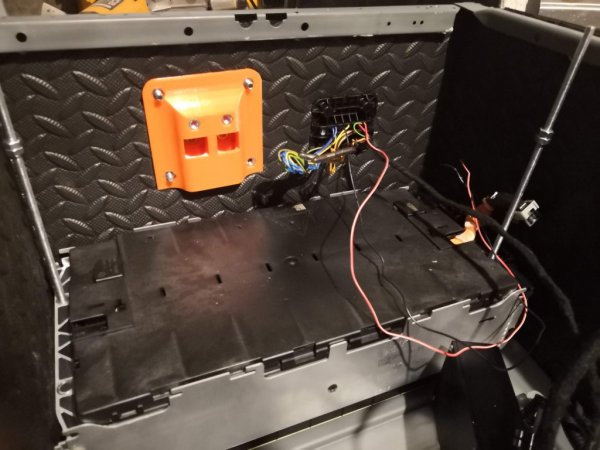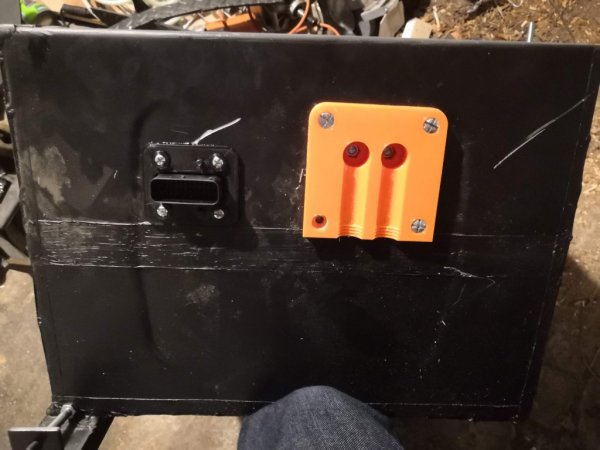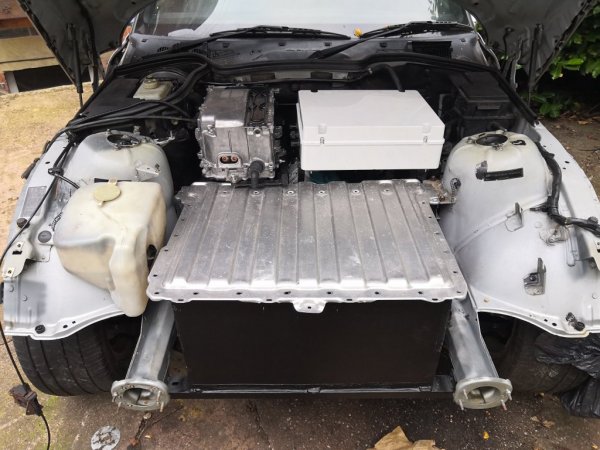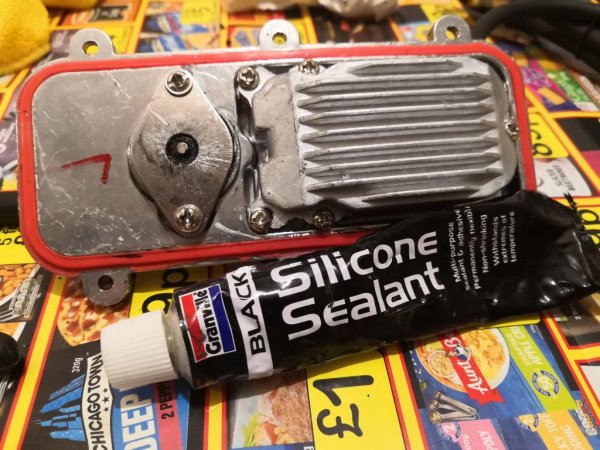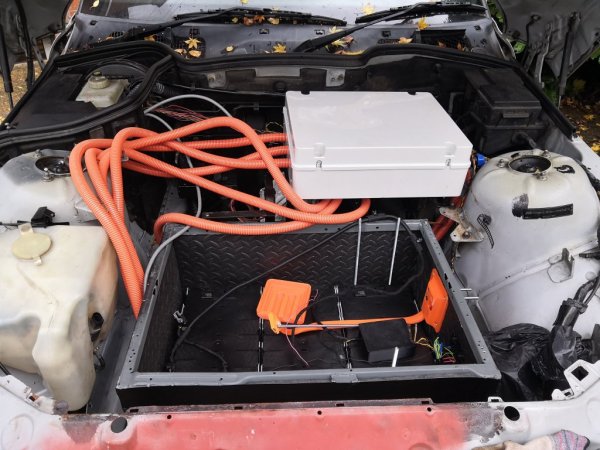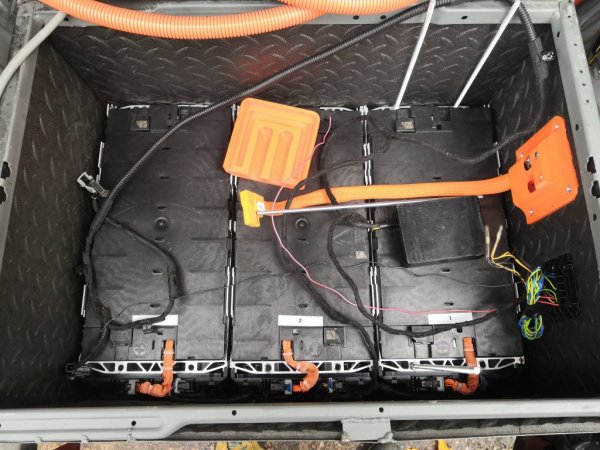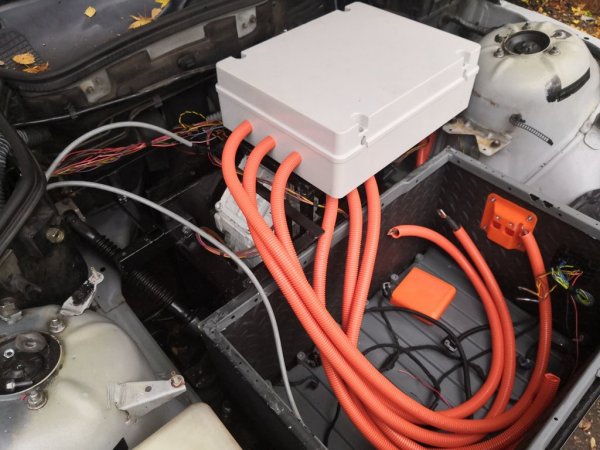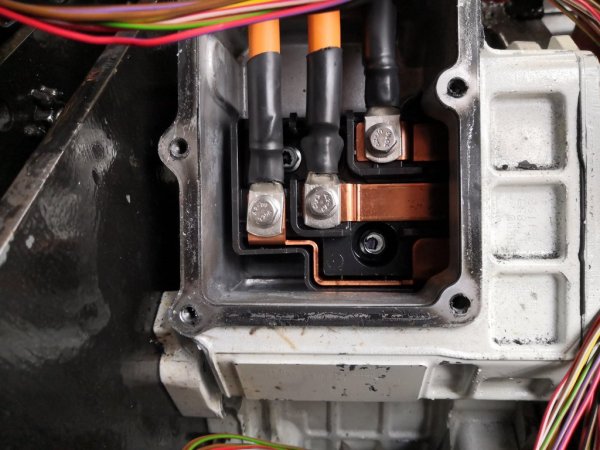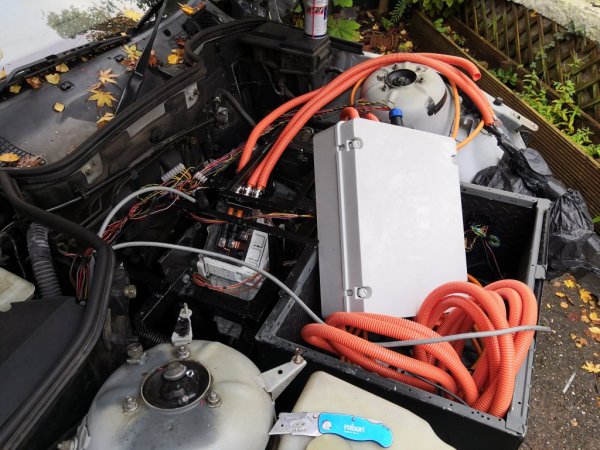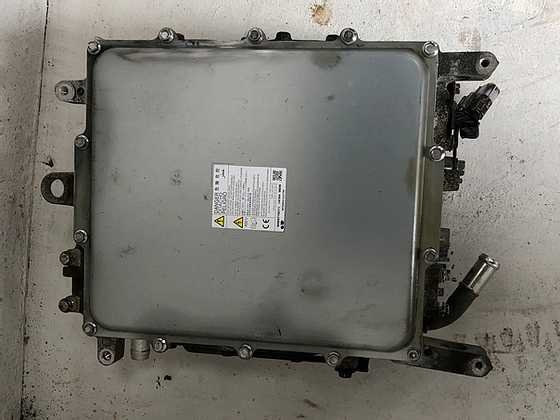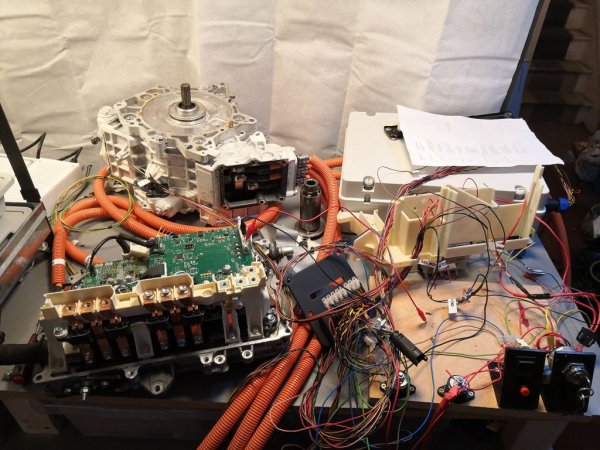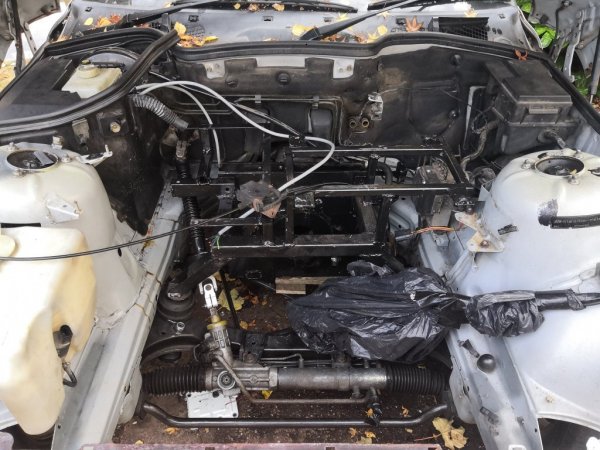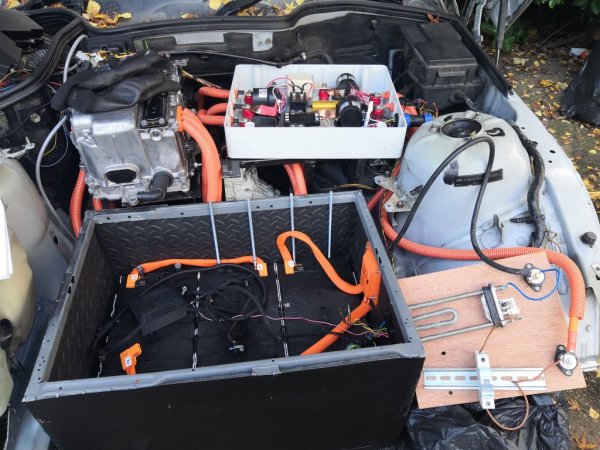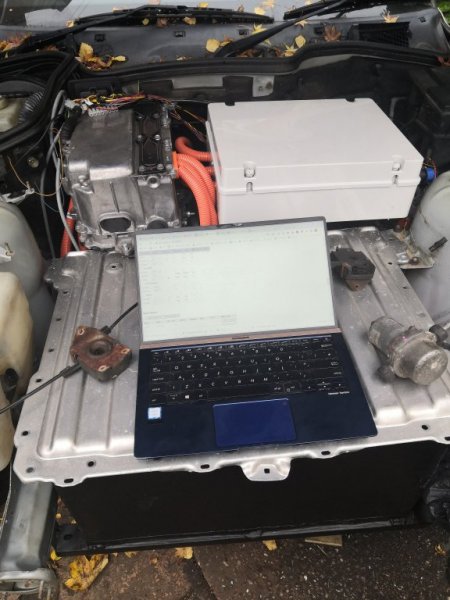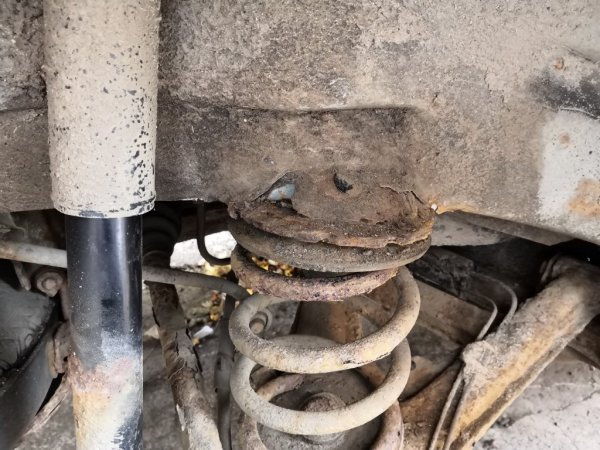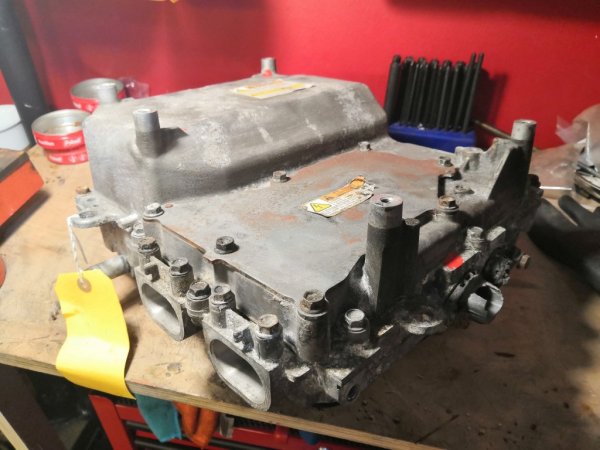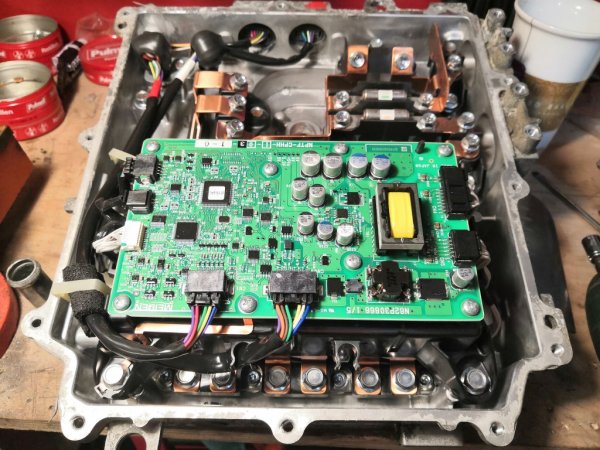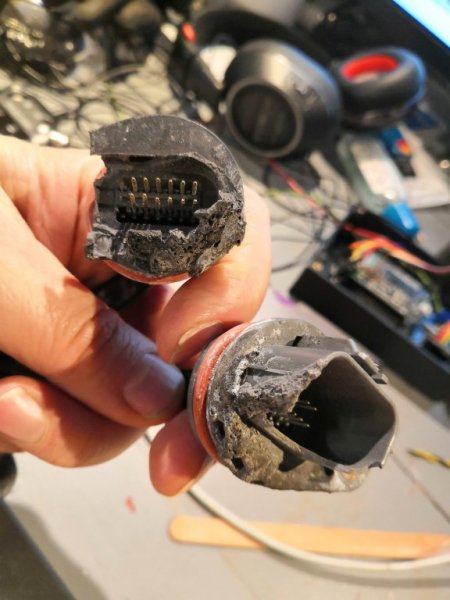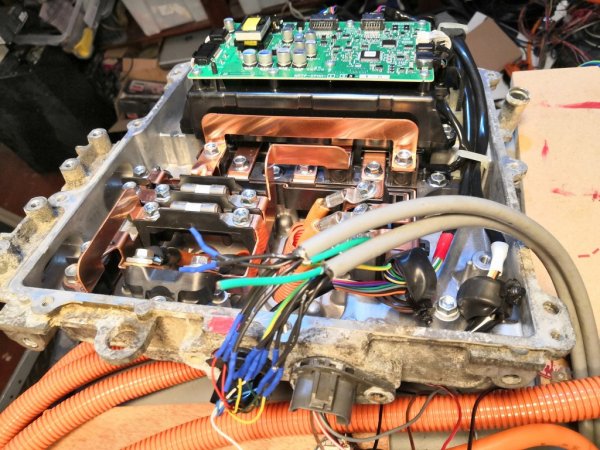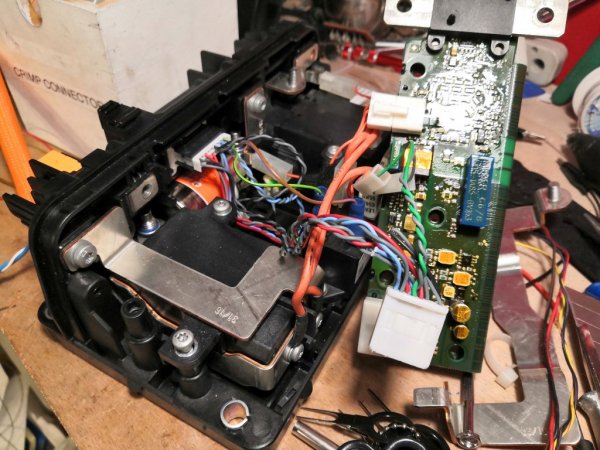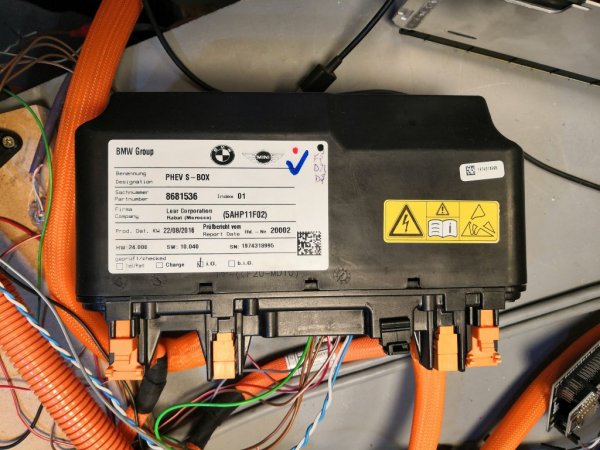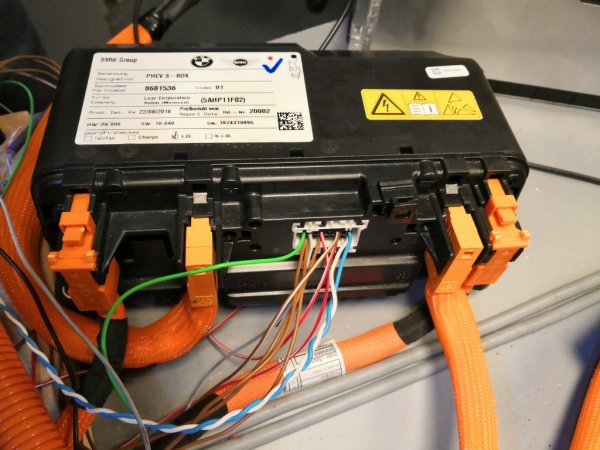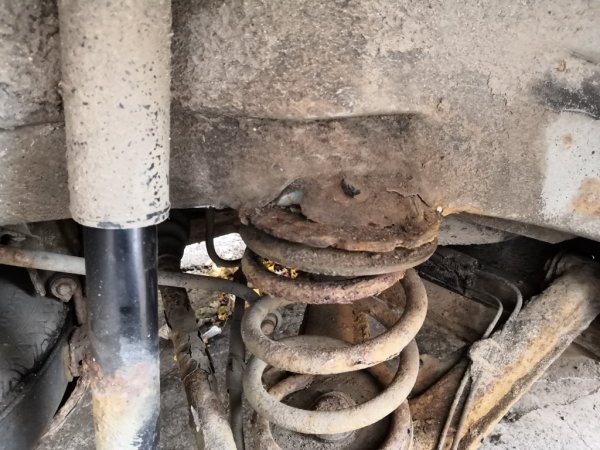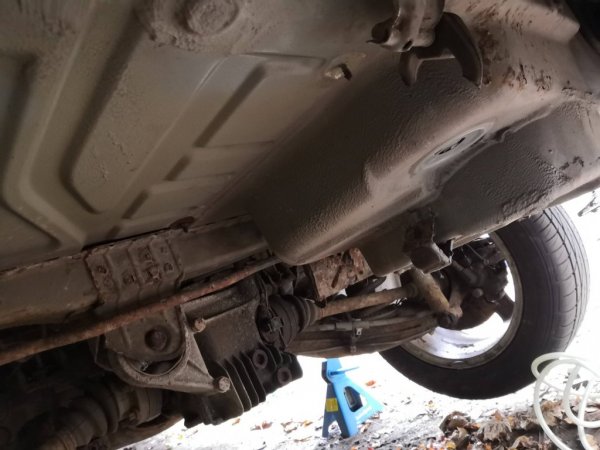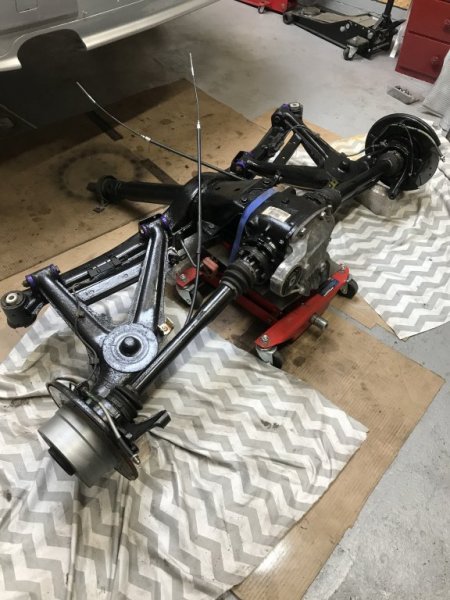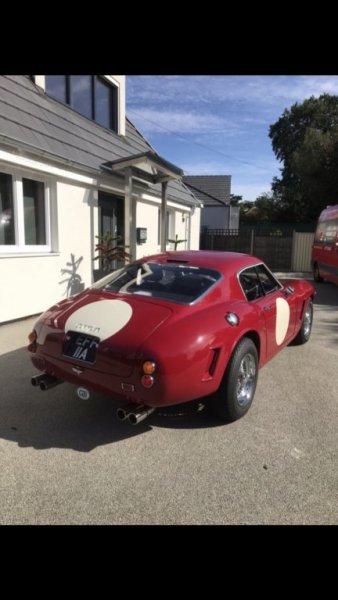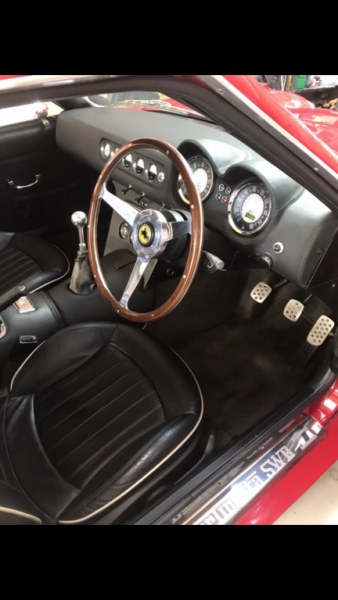It has been three weeks since my last update. The pace of this project has definitely slowed as work has picked up and the weather has worsened. Nonetheless, there is plenty of progress to report. Unfortunately I haven't been great at taking photos this time around so forgive the paucity of pictures.
Battery Box
After my disastrous spatial miscalculations of the last update, I decided I wouldn't try fitting anything else until the battery box was actually done. This has taken a lot longer than expected. For a start, I needed more steel than I thought to get a properly sealed box all the way around. One of the washing machine panels I was going to use bowed out at the top and trying to rejoin it to the frame in a way that made sense was just too much work. So I cut it off and replaced it with a fresh piece of steel, as well as adding one to the bottom, and a patch to the back to make it nice and square all round. The welding isn't exactly pretty but I'm slowly getting more consistent and only occasionally forgetting to turn the gas on.
Before I put all the new panels on though, I needed to fit the base plate from the original BMW box. This being aluminium, I couldn't weld it, so instead I welded in four standoffs to the base of the box and drilled them to accept rivets. Having trimmed and neatened the base plate up with the grinder, I dropped it in, drilled through, and test-riveted it. It worked beautifully.
So, the flat panels were welded on, and the whole lot was given a coat of zinc primer. Next up: mounting it in the car.
This was a little complicated. The box had to sit above the steering rack and protrude out almost to the radiator where there was nothing obvious on which to mount it. At the back, I concocted an arrangement of 40x20mm box section welded to two circular standoffs that straddle the steering rack bolts into the front cross member. Two pieces of plate then extend towards the back of the car from these standoffs with holes to line up with unused 8mm holes in the cross member. This took a lot of measuring and tacking in-situ before it could all be welded up and ultimately, welded to the bottom of the battery box.
At the front I decided to re-use the radiator mounts, since these will no longer be used. They're inn pretty good shape and tie directly to the front frame so should be strong enough, though I can always reinforce them if needed. Another piece of 40x20mm box spans the gap between them with little lips sticking up, drilled with two more 8mm holes that pass through the radiator mounts. Again, with it all in situ I tacked it to the bottom of the battery box then removed it for some proper welds.
Given the way this has been constructed, it's far from water tight, so I've bought some brush-on seam sealer to go over all the welds, joints and gaps. Once this is applied, I'll be adding a layer of EVA foam (OK, yoga mat) insulation all the way around before refitting the base plate.
This leaves two final jobs: the high voltage connector and the lid.
I prototyped a design for the HV connector on my 3D printer which showed up all the flaws: I'd over-sized the spaces for captive nuts and undersized the holes for the connectors. But version two is well on its way. In fact it is two thirds printed but my printer decided to throw one of its periodic tantrums half way through the third component and I haven't had time to sort it yet. I may also need some more PETG. Once I have tested the design I will share it like all the others.
For the lid, I plan to reuse the lid of the original battery box, cut down to fit. This will need a little modification on the underside to create a good seal (probably bonding on some flat strips of aluminium and using more EVA foam). But it looks great. It's all marked up and just needs cutting now. I plan to rivet an aluminium panel to the front of the box with holes that match up to those on the lid so that it can be bolted down.
Inverter Mount
About five times over the last three weeks I have dug out the inverter, balanced it in various positions in the engine bay, muttered swearily, and put it away again. On the sixth attempt, I had not exactly an epiphany but at least an idea of how it could be mounted.
I found some fairly thick (maybe 2.5mm? I should probably check) bar in the cellar and decided I could make a U-shaped cradle from that to pick up the Prius inverter's three mounting points. I mocked this up in cardboard before cutting some strips to length with the handsaw - limited time now means earlier starts on the weekend when using the grinder might see my neighbours turn violent. Fortunately the welder is relatively quiet so I tacked the pieces together before checking the fit, then welded it up properly along with some captive nuts. It's not as stiff as the 20x20 box that the HV junction box frame is made from. But once it is welded in it will be stiff enough. A diagonal of 40x20 at the back and two 20x20 uprights will tie it into the rest of the mounting frame.
Cooling
This just leaves the cooling for the inverter and motor. With the battery box in place, I can now see that there should actually be space in front of it for both radiator and oil cooler. This will mean longer pipes than I planned but it will make mounting nice and easy as I can just tie into the slam panel. Plenty of room to route the pipes around the side of the battery box.
Now I just need some time and some decent weather - ideally decent weather precisely when I have some time!
Battery Box
After my disastrous spatial miscalculations of the last update, I decided I wouldn't try fitting anything else until the battery box was actually done. This has taken a lot longer than expected. For a start, I needed more steel than I thought to get a properly sealed box all the way around. One of the washing machine panels I was going to use bowed out at the top and trying to rejoin it to the frame in a way that made sense was just too much work. So I cut it off and replaced it with a fresh piece of steel, as well as adding one to the bottom, and a patch to the back to make it nice and square all round. The welding isn't exactly pretty but I'm slowly getting more consistent and only occasionally forgetting to turn the gas on.
Before I put all the new panels on though, I needed to fit the base plate from the original BMW box. This being aluminium, I couldn't weld it, so instead I welded in four standoffs to the base of the box and drilled them to accept rivets. Having trimmed and neatened the base plate up with the grinder, I dropped it in, drilled through, and test-riveted it. It worked beautifully.
So, the flat panels were welded on, and the whole lot was given a coat of zinc primer. Next up: mounting it in the car.
This was a little complicated. The box had to sit above the steering rack and protrude out almost to the radiator where there was nothing obvious on which to mount it. At the back, I concocted an arrangement of 40x20mm box section welded to two circular standoffs that straddle the steering rack bolts into the front cross member. Two pieces of plate then extend towards the back of the car from these standoffs with holes to line up with unused 8mm holes in the cross member. This took a lot of measuring and tacking in-situ before it could all be welded up and ultimately, welded to the bottom of the battery box.
At the front I decided to re-use the radiator mounts, since these will no longer be used. They're inn pretty good shape and tie directly to the front frame so should be strong enough, though I can always reinforce them if needed. Another piece of 40x20mm box spans the gap between them with little lips sticking up, drilled with two more 8mm holes that pass through the radiator mounts. Again, with it all in situ I tacked it to the bottom of the battery box then removed it for some proper welds.
Given the way this has been constructed, it's far from water tight, so I've bought some brush-on seam sealer to go over all the welds, joints and gaps. Once this is applied, I'll be adding a layer of EVA foam (OK, yoga mat) insulation all the way around before refitting the base plate.
This leaves two final jobs: the high voltage connector and the lid.
I prototyped a design for the HV connector on my 3D printer which showed up all the flaws: I'd over-sized the spaces for captive nuts and undersized the holes for the connectors. But version two is well on its way. In fact it is two thirds printed but my printer decided to throw one of its periodic tantrums half way through the third component and I haven't had time to sort it yet. I may also need some more PETG. Once I have tested the design I will share it like all the others.
For the lid, I plan to reuse the lid of the original battery box, cut down to fit. This will need a little modification on the underside to create a good seal (probably bonding on some flat strips of aluminium and using more EVA foam). But it looks great. It's all marked up and just needs cutting now. I plan to rivet an aluminium panel to the front of the box with holes that match up to those on the lid so that it can be bolted down.
Inverter Mount
About five times over the last three weeks I have dug out the inverter, balanced it in various positions in the engine bay, muttered swearily, and put it away again. On the sixth attempt, I had not exactly an epiphany but at least an idea of how it could be mounted.
I found some fairly thick (maybe 2.5mm? I should probably check) bar in the cellar and decided I could make a U-shaped cradle from that to pick up the Prius inverter's three mounting points. I mocked this up in cardboard before cutting some strips to length with the handsaw - limited time now means earlier starts on the weekend when using the grinder might see my neighbours turn violent. Fortunately the welder is relatively quiet so I tacked the pieces together before checking the fit, then welded it up properly along with some captive nuts. It's not as stiff as the 20x20 box that the HV junction box frame is made from. But once it is welded in it will be stiff enough. A diagonal of 40x20 at the back and two 20x20 uprights will tie it into the rest of the mounting frame.
Cooling
This just leaves the cooling for the inverter and motor. With the battery box in place, I can now see that there should actually be space in front of it for both radiator and oil cooler. This will mean longer pipes than I planned but it will make mounting nice and easy as I can just tie into the slam panel. Plenty of room to route the pipes around the side of the battery box.
Now I just need some time and some decent weather - ideally decent weather precisely when I have some time!
Attachments
-
62 KB Views: 143
-
208.6 KB Views: 139
-
87.5 KB Views: 133
-
186.1 KB Views: 125
-
48.6 KB Views: 127

